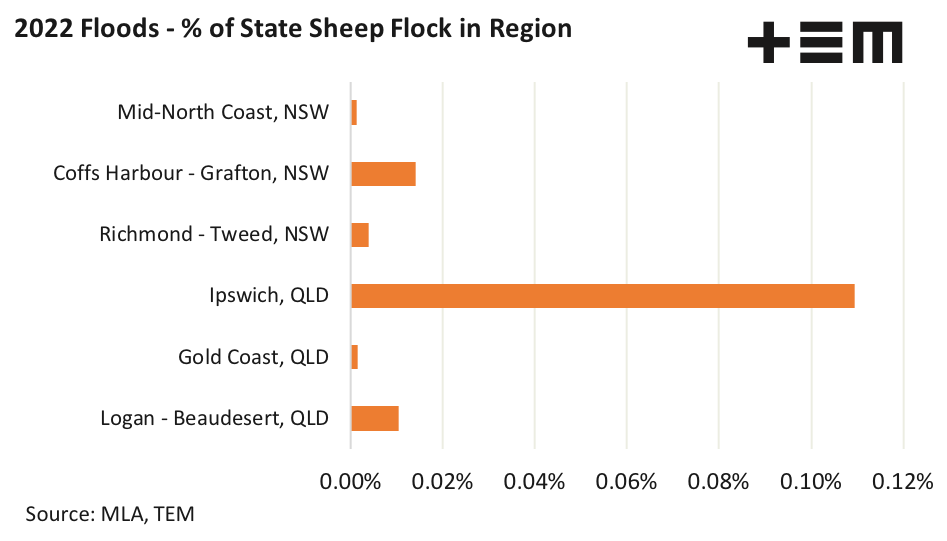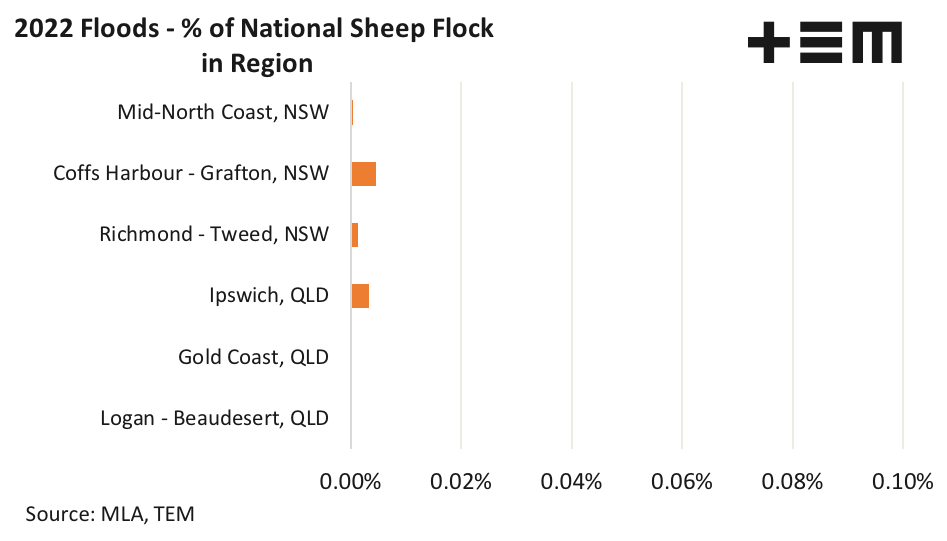Something amiss?

The Snapshot
- Across the main six regions impacted by the recent flooding there are about 6,400 sheep and lambs in total.
- In terms of the state flock that is about 0.12% of QLD sheep/lamb flock and 0.02% of the NSW flock.
- On a national basis, the volumes are even lower coming in at around 0.01% of the total Australian flock.
The Detail
We’ve had quite a few subscriber queries on the impact of the NSW/QLD floods on the sheep/lamb sector. Some folks have even criticised us for our focus on the cattle only impacts that we published – see links here Rain, rain go away, here Running on empty and here Flood-slump.
However, the reason we haven’t focused much on the sheep and lamb impacts of the floods is that in the main impacted regions of NSW and QLD there aren’t that many sheep and lamb. While our sympathy goes to producers in these areas with sheep/lamb impacted the numbers are few.
Indeed, across the main six regions impacted by the recent flooding (three in NSW and three in QLD) there are about 6,400 sheep and lambs in total, according to the ABS statistics, which on a state based proportional measure is pretty low. That is, about 0.12% of QLD sheep/lamb flock and 0.02% of the NSW flock. In contrast the flooding impacted regions that held approximately 475,000 head of cattle, which equates to 8% of the NSW herd and 1.5% of the Queensland herd, or about 2% of the national herd.
Additionally, on a national basis, the volumes are even lower coming in at around 0.01% of the total national flock. Furthermore, the main impact to abattoirs in these regions are more focused toward cattle processing. So there shouldn’t be a significant supply/processing issue for the sheep sector.



